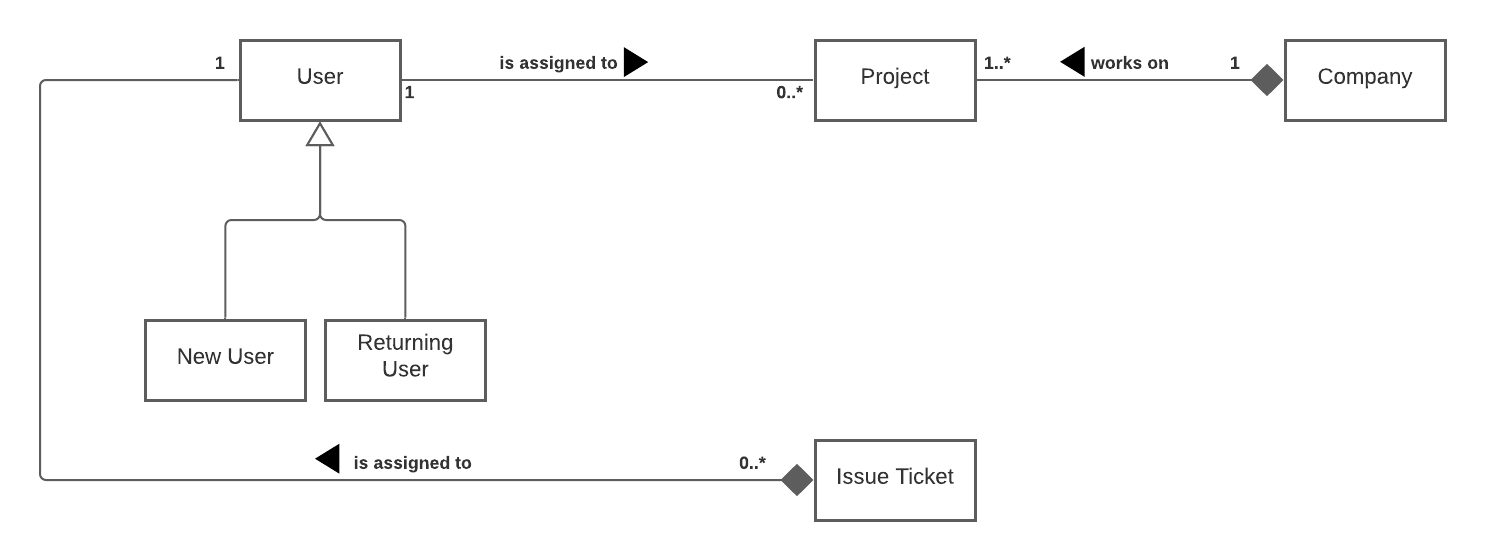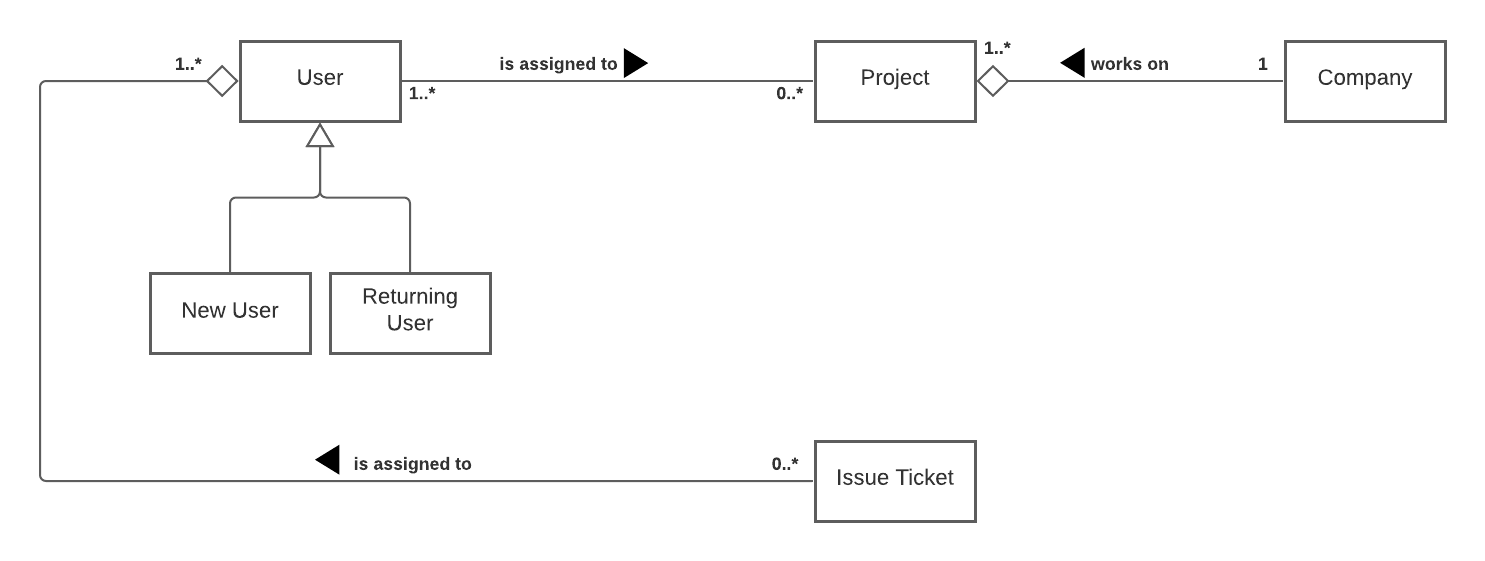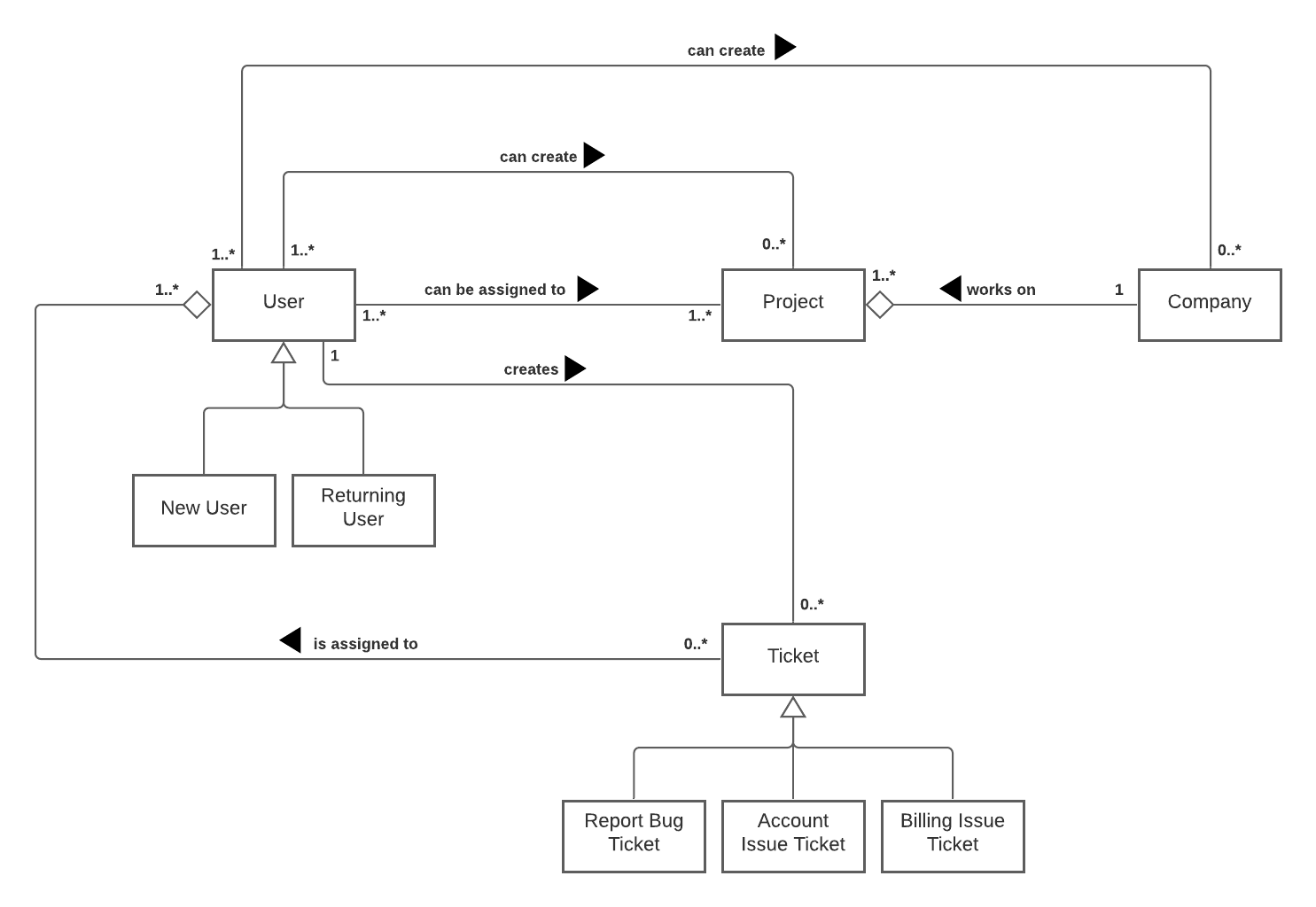I am incredibly new to Domain Models and I am trying to build up my understanding. I have created this domain model around a scenario which I will provide. I feel this model is simple and as a result, feels incorrect and might be missing elements I might not have thought of although, I cannot think of what else might need to be included in a domain model given the scenario. The idea is to demonstrate the relationship between real world class entities which I feel I have managed to achieve.
Scenario: Management Application that allows you to create users, projects, companies and issue tickets. The projects are assigned to companies, the users are assigned to projects and the issue tickets are assigned to the users. Tickets have a status which can be changed.
Changes
Implementing proposed changes. I think this is a better way to represent the idea based on the feedback returned, especially in regards to the use of composition. I have also updated the multiplicities to better represent the scenario.
Further changes




UserandProjectseems off. Only a single user can be assigned to a project? Also, the composition betweenIssue TicketandUsersurely is wrong. I can't imagine that a ticket is made out of users, and that a user is deleted if the ticket is deleted. – Lucania